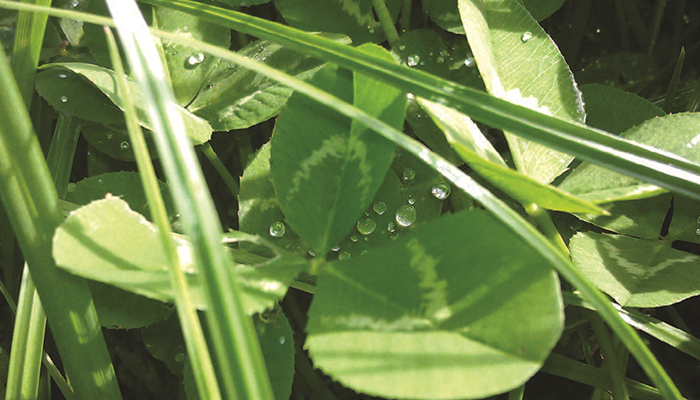27 February 2022
White Clover Factsheet

Teagasc recently published a compendium of 20 factsheets providing the latest technical advice on soils, nutrients and fertiliser. The sixth of these is about White Clover and can be read here. All 20 will be published here on Teagasc Daily
Farmers are urged to focus on Nutrient management planning, optimisation of soil fertility, using organic manures strategically and increasing clover in swards, all balanced with prudent fertiliser usage.

Priorities
The optimum amount of white clover in a field across the season is 20-25% of total herbage mass
Opportunities to save money
At this level, white clover can fix up to 150 kg N/ha per year improving both animal and sward production, as well as allowing a reduction in chemical N fertiliser use Adjust fertiliser application rate in summer – where sward white clover content is increasing (>20%), reduce chemical N fertiliser application rates to approx. 9 kg N/ha per rotation
Key steps
In spring, good grazing management is crucial to promote white clover production and persistence In spring, avoid poaching using on/off grazing Good soil fertility promotes sward white clover content – white clover requires a minimum soil Index 3 for P (5.1 – 8 mg/l) and K (101 – 150 mg/l) and a minimum soil pH of 6.5-7.0 Reseed and oversow areas of the farm with low or no white clover in April and May.
Building white clover content in grazing swards
Establishing white clover on farm will take a number of years using a combination of reseeding and over-sowing. Use Irish Recommended List grass and white clover varieties Incorporating white clover in a full reseed is the most reliable method of establishing white clover and provides the best opportunity for weed control, whereas over-sowing is a simple and low cost method of introducing white clover into existing swards.
- Aim to complete a full reseed of 10-15% of the grazing area as early in the year as possible (April, May)
- Prepare a fine, firm seedbed
- Seed mix should include 3.5 to 5.0 kg/ha medium leaf size clover for cattle swards and 5.0 to 6.0 kg/ha small leaf size clover for sheep swards
- Roll well to ensure good seed and soil contact
- Over-sow 10% of the available area in April or May immediately after grazing (≤ 4 cm post-grazing sward height) or after cutting the paddock for surplus bales
- Sowing rate should be 4.0 to 6.0 kg/ha of white clover seed
- Post-sowing management – full reseed or over-sowing
- Target a pre-grazing yield of 600 to 1000 kg DM/ha and a post grazing height sward of ≤4 cm for at least the first three grazings post-sowing
- Graze later in the autumn to avoid carrying heavy covers over the first winter period
Deirdre Hennessy, Seamus Kearney, Mark Plunkett, David Wall, Mark Moore (Editor), Pat Murphy, Stan Lalor, were the main contributors to this series of leaflets. Numerous colleagues from Teagasc AGRIP, CELUP, REDP, Signpost, PR dept. and advisory service also participated.
To access the entire compendium of 20 factsheets see Soils, Nutrients and Fertiliser Factsheets Find more information on this topic in Soil & Soil Fertility
